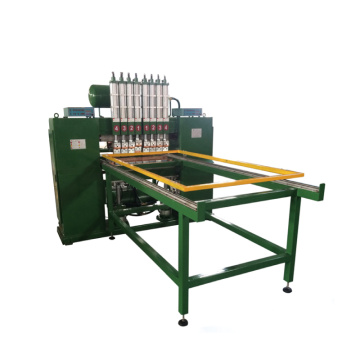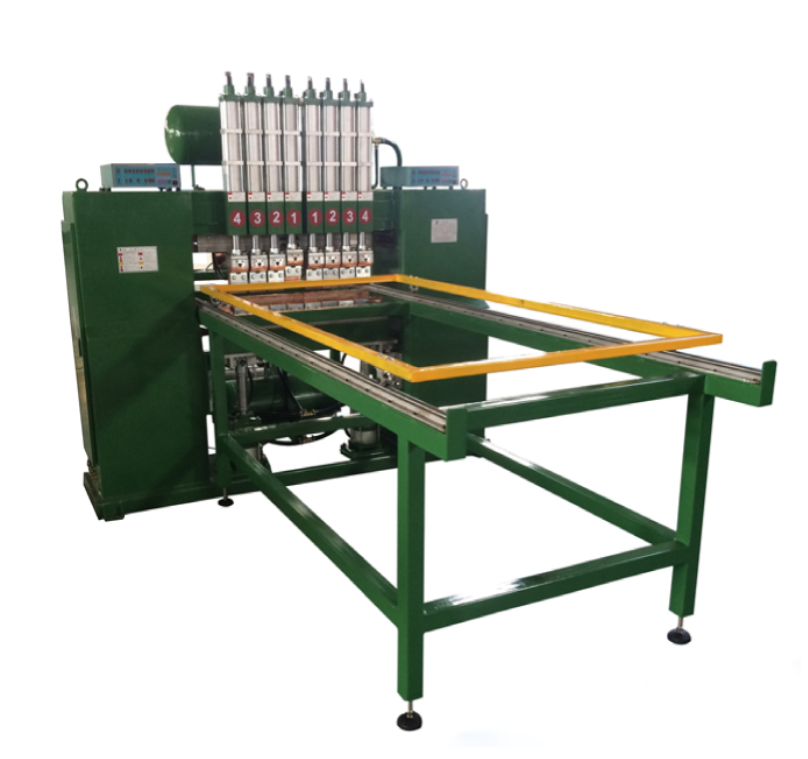
Multi Head Welding Machine For Wire Mesh
(Total 4 Products)-
Min. Order:1Manual wire mesh welding machine: The expert in flexible control of wire mesh weldingIn the field of Wire Mesh processing, Manual Wire Mesh Spot Welder, with its convenient manual operation and targeted wire mesh Welding design, has become a...
-
Min. Order:1Double-station wire mesh welding machine: A powerful tool that doubles the efficiency of wire mesh production In the field of mass production of Wire Mesh, the Dual-Station Wire Mesh Welding Machine, with its unique design of two workstations...
-
Min. Order:1Multi-Head Wire Mesh Spot Welding Machine: Igniting the Revolution of Mass production Efficiency of Wire MeshIn the process of the wire mesh manufacturing industry moving towards large-scale production, the efficiency and stability of welding...
-
Min. Order:1Single-Station Wire Mesh Welding Machine: Precisely control every detail of wire mesh weldingAmong the family of Wire Mesh Welding equipment, the single-station Wire Mesh Welding Machine, with its feature of focusing on precise operation at a Single...
A multi-head welding machine for wire mesh is a specialized automated equipment designed to simultaneously weld multiple intersection points of wire mesh, significantly enhancing production efficiency. Widely used in wire mesh manufacturing, it creates strong, uniform welds for various mesh products, serving industries like construction, agriculture, transportation, and security.
Working Principle
Operating on resistance welding principles, this machine uses multiple electrode heads arranged in rows or grids. When activated, each electrode applies pressure to wire intersections while conducting electric current. Resistance heat generated at contact points melts the wire surfaces, forming simultaneous weld spots as current flows through the electrodes. The synchronized control system ensures uniform current, pressure, and timing across all heads, guaranteeing consistent weld quality.
Structure and Components
It consists of a main frame, multiple electrode assemblies, a wire feeding system, a welding transformer, a pressure mechanism, a control panel, and a cooling system. Electrode assemblies (ranging from 4 to 32 heads) align with mesh intersections. The wire feeding system positions longitudinal and transverse wires precisely. The transformer supplies welding current, while the pressure mechanism applies uniform force. The control panel adjusts parameters, and the cooling system prevents overheating during continuous operation.
Advantages
Its most significant advantage is high efficiency, completing multiple welds in one cycle—5-10 times faster than single-head machines. Weld consistency is ensured by synchronized parameter control, reducing defects like weak spots or spatter. It offers flexible customization, with adjustable electrode spacing and numbers to produce various mesh sizes (5mm-200mm openings). Automated operation minimizes labor costs and improves workplace safety.
Applications
In construction, it produces reinforcing steel mesh for concrete structures. Agricultural applications include livestock fencing and crop support mesh. Transportation uses it for highway guardrail mesh and railway safety barriers. Security sectors rely on it for prison mesh and anti-theft screens. It also manufactures mesh for industrial filters, storage racks, and decorative metal panels.
Development Trend
Modern models integrate intelligent features like PLC control and touch-screen interfaces for easy parameter adjustment. Advanced machines feature servo-driven wire feeding for higher precision. Some include automatic mesh size changeover systems, reducing setup time between production runs. Energy-saving technologies and eco-friendly cooling systems are adopted, aligning with green manufacturing. Enhanced sensor systems detect wire positioning errors, ensuring continuous production stability.

Multi Head Welding Machine for Wire Mesh
The multi-head welding machine for metal wire mesh is an automated device specially designed for the batch production of metal wire mesh. Through the synchronous operation of multiple welding guns, it achieves efficient cross-welding of longitudinal and transverse metal wires. This equipment adopts resistance welding or high-frequency induction welding processes to ensure firm weld points and no material oxidation. It is suitable for large-scale processing of various metal wire meshes such as stainless steel and low-carbon steel.



